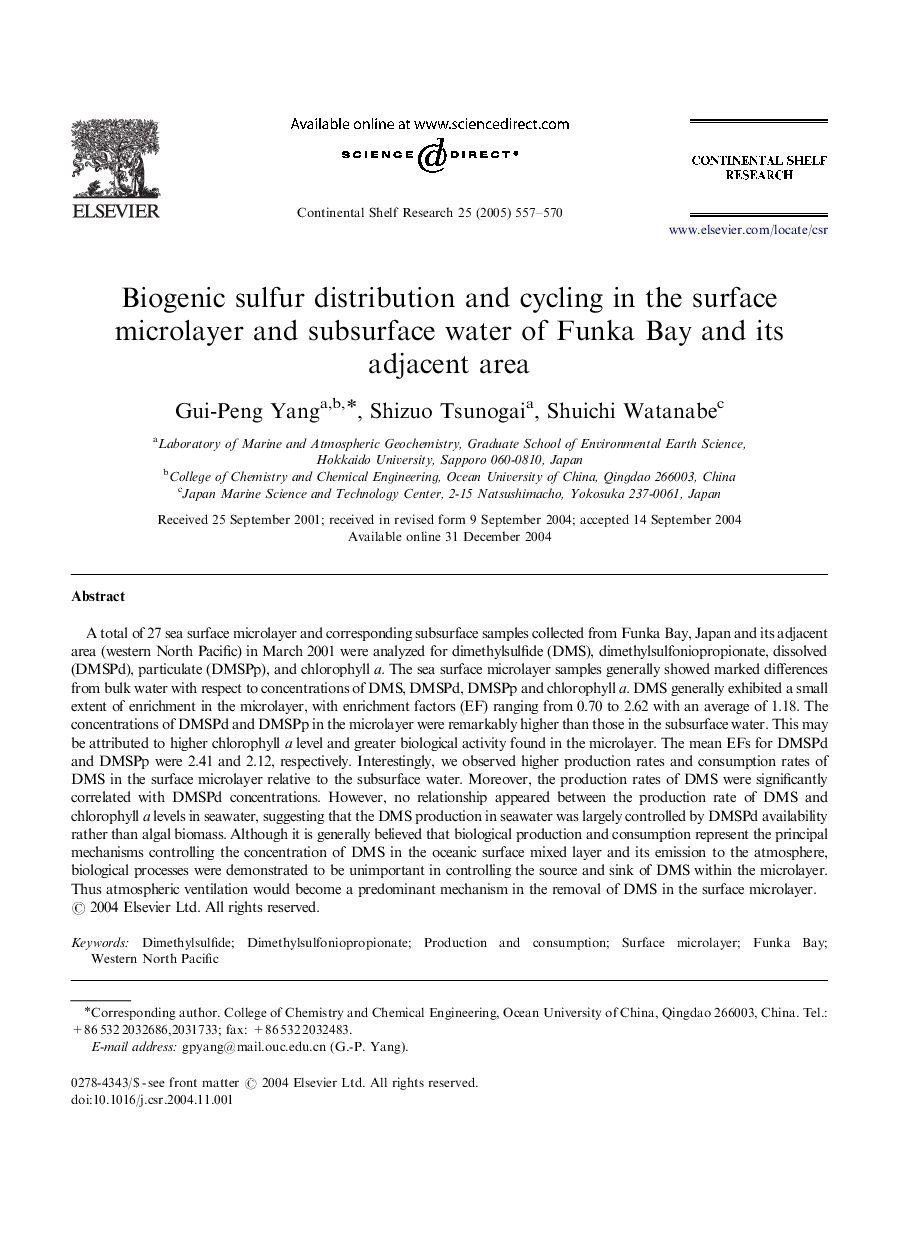| کد مقاله | کد نشریه | سال انتشار | مقاله انگلیسی | نسخه تمام متن |
|---|---|---|---|---|
| 9479233 | 1325275 | 2005 | 14 صفحه PDF | دانلود رایگان |
عنوان انگلیسی مقاله ISI
Biogenic sulfur distribution and cycling in the surface microlayer and subsurface water of Funka Bay and its adjacent area
دانلود مقاله + سفارش ترجمه
دانلود مقاله ISI انگلیسی
رایگان برای ایرانیان
کلمات کلیدی
موضوعات مرتبط
مهندسی و علوم پایه
علوم زمین و سیارات
زمین شناسی
پیش نمایش صفحه اول مقاله

چکیده انگلیسی
A total of 27 sea surface microlayer and corresponding subsurface samples collected from Funka Bay, Japan and its adjacent area (western North Pacific) in March 2001 were analyzed for dimethylsulfide (DMS), dimethylsulfoniopropionate, dissolved (DMSPd), particulate (DMSPp), and chlorophyll a. The sea surface microlayer samples generally showed marked differences from bulk water with respect to concentrations of DMS, DMSPd, DMSPp and chlorophyll a. DMS generally exhibited a small extent of enrichment in the microlayer, with enrichment factors (EF) ranging from 0.70 to 2.62 with an average of 1.18. The concentrations of DMSPd and DMSPp in the microlayer were remarkably higher than those in the subsurface water. This may be attributed to higher chlorophyll a level and greater biological activity found in the microlayer. The mean EFs for DMSPd and DMSPp were 2.41 and 2.12, respectively. Interestingly, we observed higher production rates and consumption rates of DMS in the surface microlayer relative to the subsurface water. Moreover, the production rates of DMS were significantly correlated with DMSPd concentrations. However, no relationship appeared between the production rate of DMS and chlorophyll a levels in seawater, suggesting that the DMS production in seawater was largely controlled by DMSPd availability rather than algal biomass. Although it is generally believed that biological production and consumption represent the principal mechanisms controlling the concentration of DMS in the oceanic surface mixed layer and its emission to the atmosphere, biological processes were demonstrated to be unimportant in controlling the source and sink of DMS within the microlayer. Thus atmospheric ventilation would become a predominant mechanism in the removal of DMS in the surface microlayer.
ناشر
Database: Elsevier - ScienceDirect (ساینس دایرکت)
Journal: Continental Shelf Research - Volume 25, Issue 4, March 2005, Pages 557-570
Journal: Continental Shelf Research - Volume 25, Issue 4, March 2005, Pages 557-570
نویسندگان
Gui-Peng Yang, Shizuo Tsunogai, Shuichi Watanabe,